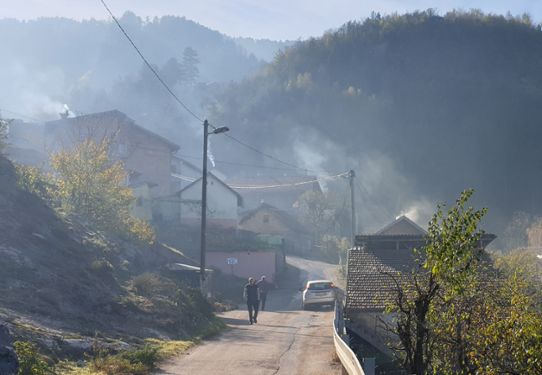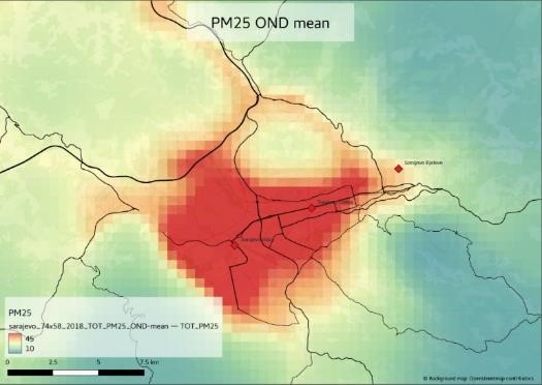SMHI collaborated with municipalities, universities, and meteorological institutes in Bosnia and Herzegovina to gather information and data on air pollutant emissions. The collected emission data of the two main cities, Sarajevo and Banja Luka, was consolidated using new methodologies for geographic data-interpretation especially related to individual heating, one of the major pollution sources.

Modelling air quality
SMHI’s MATCH dispersion model was used to model air quality in Sarajevo and Banja Luka, a model which considers complex meteorological factors such as temperature inversions.
A PMF receptor model was used to apportion the major sources of air pollution, following a comprehensive sampling campaign and chemical analysis of airborne particles during the winters of 2021 and 2022.
The modelling efforts highlighted the significant contribution of individual heating and transportation to the high levels of air pollution in urban areas. Comparing both models' results underscored the need for improving emission data collection and knowledge.
Visualization tool
After establishing proper management of air quality data from automatic monitoring stations to a centralized database, an open-source web client was developed for use by data owners and partners, which has been implemented locally.

Project impact
The source apportionment results have been widely disseminated and may influence future air quality action plans in Bosnia and Herzegovina. Additionally, the web client may be utilized by other countries in the Western Balkans.